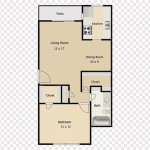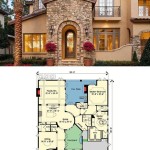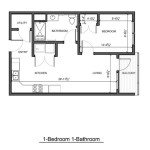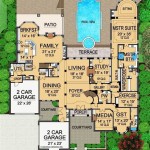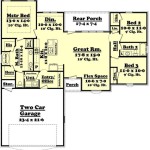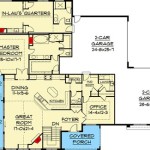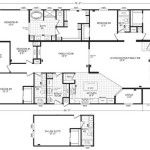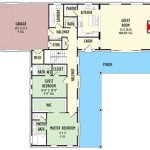Log Cabin Home Design Plans: A Comprehensive Guide
Log cabin home design plans represent a significant investment in time, resources, and lifestyle. Choosing the right plan is critical to ensuring the final product meets functional needs, aesthetic preferences, and budgetary constraints. This article delves into the various aspects of log cabin home design plans, providing a comprehensive overview of key considerations necessary for a successful project.
The appeal of log cabins lies in their rustic charm, connection to nature, and potential for energy efficiency. Modern log cabin designs have evolved significantly beyond simple, single-room structures. Today's cabins can incorporate a wide range of architectural styles, amenities, and technological advancements, requiring careful planning and execution.
Understanding Log Cabin Construction Methods
The type of log cabin construction method significantly impacts the overall design and required plans. Several common methods exist, each with its own advantages and disadvantages concerning cost, aesthetics, and structural integrity.
Full Scribe: This method involves carefully scribing each log to fit precisely against the log below, creating a tight, interlocking fit. Full scribe cabins are known for their energy efficiency and rustic appearance. However, the method requires highly skilled labor and can be more expensive than other options. The design plans for a full scribe cabin must be meticulously detailed, accounting for the unique characteristics of each log.
Log Siding: Log siding provides the aesthetic of a full log cabin without the structural constraints. This involves applying thin logs or half-logs to the exterior of a conventionally framed structure. Log siding offers flexibility in design, as the underlying structure can be built using standard framing techniques. Design plans for log siding cabins focus on the framing and the application of the siding, allowing for easier integration of modern building materials and technologies.
Post and Beam: In this system, large vertical posts support horizontal beams, which then support the roof and walls. Logs are often used as infill between the posts and beams, providing insulation and visual appeal. Post and beam construction offers significant design flexibility and allows for larger open spaces. The plans must clearly indicate the dimensions and placement of the posts and beams, as well as the method of infill.
Chinked Log: This involves stacking logs with gaps between them, which are then filled with chinking. Chinking is a material, traditionally made of clay, lime, and straw, used to seal the gaps and provide insulation. Chinked log cabins offer a rustic appearance and can be more affordable than full scribe cabins. However, maintaining the chinking requires ongoing effort. The design plans must specify the width and spacing of the logs, as well as the type and application of the chinking material.
Key Elements of Log Cabin Design Plans
Comprehensive log cabin design plans are essential for a successful building project. These plans serve as a blueprint for the entire construction process, guiding the builder and ensuring that the final product meets the homeowner's specifications. Several key elements are typically included in a complete set of plans.
Foundation Plan: The foundation plan details the type of foundation required, whether it is a slab, crawl space, or basement. It specifies the dimensions, materials, and construction methods used for the foundation. This is a critical element, as the foundation provides the structural support for the entire cabin. The plan will detail the frost line depth relevant to the build location to ensure the structural integrity of the build.
Floor Plans: Floor plans illustrate the layout of each level of the cabin, showing the placement of walls, doors, windows, rooms, and other features. They include dimensions, square footage, and the intended use of each space. Detailed floor plans are essential for visualizing the flow of the cabin and ensuring that it meets the homeowner's needs.
Elevation Views: Elevation views depict the exterior appearance of the cabin from all sides. They show the location of windows, doors, roofing details, and other exterior features. Elevation views are important for visualizing the cabin's aesthetic and ensuring that it blends harmoniously with its surroundings. This will also dictate the grade of logs used for each course of the cabin.
Roofing Plan: The roofing plan specifies the type of roofing material, the pitch of the roof, and the method of construction. It also includes details about the eaves, overhangs, and drainage systems. The roofing plan is critical for ensuring that the cabin is properly protected from the elements.
Electrical Plan: The electrical plan shows the location of outlets, switches, lighting fixtures, and other electrical components. It also specifies the wiring methods and the capacity of the electrical system. A well-designed electrical plan is essential for safety and convenience.
Plumbing Plan: The plumbing plan illustrates the location of pipes, fixtures, and appliances, such as sinks, toilets, showers, and water heaters. It also specifies the type of piping and the drainage system. A well-designed plumbing plan is essential for efficient water usage and waste disposal.
Structural Details: Structural details provide detailed information about the construction of the cabin's frame, including the size and spacing of logs, beams, and other structural components. They also specify the types of fasteners and connectors used. Structural details are essential for ensuring the structural integrity of the cabin.
Factors to Consider When Choosing Log Cabin Design Plans
Selecting the right log cabin design plans involves considering a variety of factors, including the size and layout of the cabin, the location of the property, the budget, and the desired aesthetic. Careful consideration of these factors will help ensure that the final product meets the homeowner's needs and expectations.
Size and Layout: The size of the cabin should be determined by the number of occupants and their lifestyle. Consider the number of bedrooms and bathrooms needed, as well as the size of the living spaces. The layout should be functional and efficient, with good flow between rooms. It's also important to consider storage space and accessibility for individuals with mobility limitations.
Location and Climate: The location of the property will influence the design of the cabin. Consider the climate, topography, and surrounding landscape. In colder climates, insulation and energy efficiency are particularly important. In warmer climates, ventilation and shading may be more critical. The topography of the land will affect the foundation design and the accessibility of the cabin. The surrounding landscape should be considered when choosing the exterior design and the placement of windows and doors.
Budget: The budget is a critical factor in choosing log cabin design plans. The cost of construction can vary significantly depending on the size of the cabin, the materials used, and the complexity of the design. It's important to set a realistic budget and to prioritize features accordingly. Consider the cost of labor, materials, permits, and other expenses. It's also wise to factor in a contingency fund for unexpected costs.
Aesthetic Preferences: The aesthetic of the cabin should reflect the homeowner's personal style and preferences. Consider the desired level of rustic charm, the use of natural materials, and the overall design theme. Research different log cabin styles and look for inspiration in magazines, books, and websites. It's also helpful to visit existing log cabins to get a feel for different design options.
Energy Efficiency: Energy efficiency is an important consideration in log cabin design. Log cabins can be naturally energy efficient due to the thermal mass of the logs. However, proper insulation, sealing, and ventilation are essential for maximizing energy efficiency. Consider the use of energy-efficient windows, doors, and appliances. Also, explore renewable energy options, such as solar panels or wind turbines.
Local Building Codes and Regulations: It's crucial to comply with local building codes and regulations when designing and constructing a log cabin. These codes and regulations are designed to ensure the safety and structural integrity of the building. Obtain necessary permits and approvals before starting construction. Consult with local building officials to understand the requirements and to avoid potential problems.
Customization Options: Many log cabin design plans offer customization options, allowing homeowners to tailor the plans to their specific needs and preferences. These options may include changing the size of rooms, adding or removing features, and modifying the exterior design. Customization can increase the cost and complexity of the project. However, it can also result in a cabin that is perfectly suited to the homeowner's lifestyle.
Professional Assistance: Engaging a qualified architect or designer can be beneficial when choosing and customizing log cabin design plans. A professional can provide valuable guidance on design principles, building codes, and construction techniques. They can also help to create a set of plans that meet the homeowner's needs and budget. When selecting a professional, look for experience in log cabin design and a portfolio of successful projects.
Log cabin home design plans require careful and detailed consideration of various elements. From understanding the construction methods to carefully selecting the layout, materials, and features, each aspect plays a critical role in the success of the project. By considering the factors outlined above, homeowners can make informed decisions and create a log cabin that meets their needs, aesthetic preferences, and budget, resulting in a beautiful and functional living space for years to come.

Log Cabin Home Floor Plans The Original Homes

Log Home Planning Step 1 Design Timberhaven Timber Homes

Log Home Floor Plans 1500 2400 Sq Ft Cascade Handcrafted Homes

Best 4 Bedroom Log Cabin House Plans Home Floor

Standout Log Cabin Plans Escape To An Earlier Gentler Time

Log Cabin Home Plans Floor

Pin On House And Deck

17 Log Home Design Ideas For Every Room In The House

Log Cabin Home Design

Log Home Storage Solutions Honest Abe Homes Cabins

